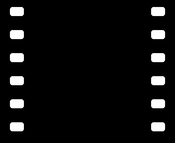Information
- Publication Type: Journal Paper with Conference Talk
- Workgroup(s)/Project(s):
- Date: 2015
- Journal: In Computer Graphics Forum
- Lecturer:
- Hamish Carr
- Kwan Liu Ma
- Giuseppe Santucci
Abstract
Tumors are heterogeneous tissues consisting of multiple regions with distinct characteristics. Characterization ofthese intra-tumor regions can improve patient diagnosis and enable a better targeted treatment. Ideally, tissuecharacterization could be performed non-invasively, using medical imaging data, to derive per voxel a number offeatures, indicative of tissue properties. However, the high dimensionality and complexity of this imaging-derivedfeature space is prohibiting for easy exploration and analysis - especially when clinical researchers require toassociate observations from the feature space to other reference data, e.g., features derived from histopathologicaldata. Currently, the exploratory approach used in clinical research consists of juxtaposing these data, visuallycomparing them and mentally reconstructing their relationships. This is a time consuming and tedious process,from which it is difficult to obtain the required insight. We propose a visual tool for: (1) easy exploration and visualanalysis of the feature space of imaging-derived tissue characteristics and (2) knowledge discovery and hypothesisgeneration and confirmation, with respect to reference data used in clinical research. We employ, as central view,a 2D embedding of the imaging-derived features. Multiple linked interactive views provide functionality for theexploration and analysis of the local structure of the feature space, enabling linking to patient anatomy andclinical reference data. We performed an initial evaluation with ten clinical researchers. All participants agreedthat, unlike current practice, the proposed visual tool enables them to identify, explore and analyze heterogeneousintra-tumor regions and particularly, to generate and confirm hypotheses, with respect to clinical reference data.
Additional Files and Images
Additional images and videos
Additional files
Weblinks
No further information available.
BibTeX
@article{raidou_EuroVis15,
title = "Visual analytics for the exploration of tumor tissue
characterization",
author = "Renata Raidou and Uulke A van der Heide and Cuong V Dinh and
Ghazaleh Ghobadi and Jesper Follsted Kallehauge and Marcel
Breeuwer and Anna Vilanova i Bartroli",
year = "2015",
abstract = "Tumors are heterogeneous tissues consisting of multiple
regions with distinct characteristics. Characterization
ofthese intra-tumor regions can improve patient diagnosis
and enable a better targeted treatment. Ideally,
tissuecharacterization could be performed non-invasively,
using medical imaging data, to derive per voxel a number
offeatures, indicative of tissue properties. However, the
high dimensionality and complexity of this
imaging-derivedfeature space is prohibiting for easy
exploration and analysis - especially when clinical
researchers require toassociate observations from the
feature space to other reference data, e.g., features
derived from histopathologicaldata. Currently, the
exploratory approach used in clinical research consists of
juxtaposing these data, visuallycomparing them and mentally
reconstructing their relationships. This is a time consuming
and tedious process,from which it is difficult to obtain the
required insight. We propose a visual tool for: (1) easy
exploration and visualanalysis of the feature space of
imaging-derived tissue characteristics and (2) knowledge
discovery and hypothesisgeneration and confirmation, with
respect to reference data used in clinical research. We
employ, as central view,a 2D embedding of the
imaging-derived features. Multiple linked interactive views
provide functionality for theexploration and analysis of
the local structure of the feature space, enabling
linking to patient anatomy andclinical reference data.
We performed an initial evaluation with ten clinical
researchers. All participants agreedthat, unlike current
practice, the proposed visual tool enables them to identify,
explore and analyze heterogeneousintra-tumor regions and
particularly, to generate and confirm hypotheses, with
respect to clinical reference data.",
journal = "In Computer Graphics Forum",
URL = "https://www.cg.tuwien.ac.at/research/publications/2015/raidou_EuroVis15/",
}


